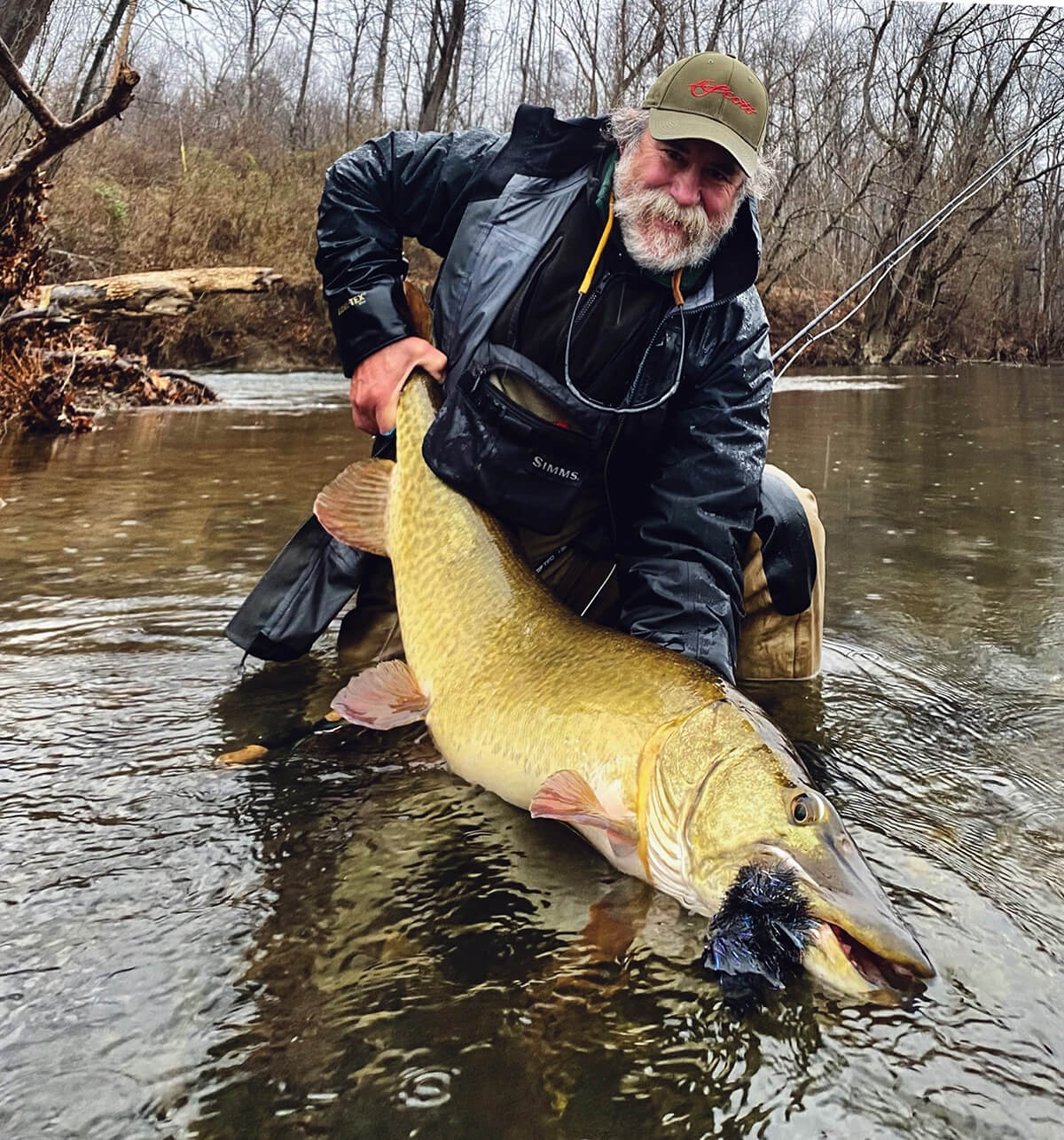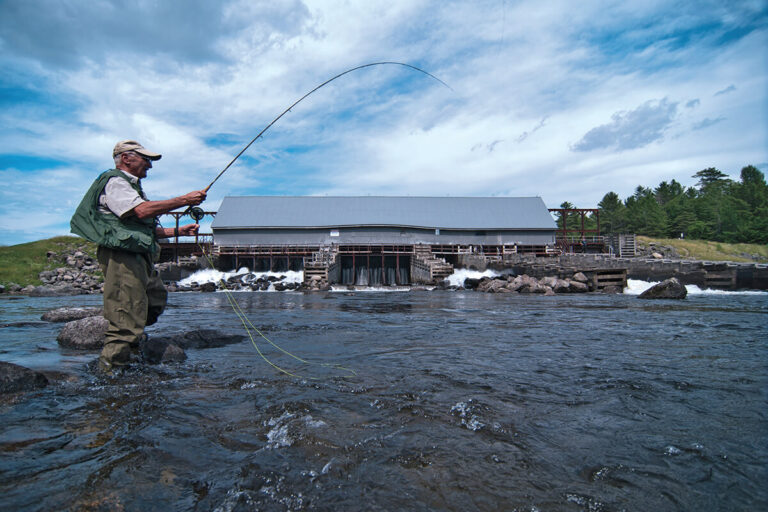For salmon fishing, the size of the hook depends on the type of salmon and the bait being used. The appropriate hook size is typically in the range of 1/0 to 4/0.
Salmon fishing requires using larger hooks to accommodate the size and strength of the fish, while still allowing the bait to be presented naturally. The size of the hook should be chosen based on the specific fishing conditions and the size of the salmon being targeted.
By selecting the right size hook, anglers can increase their chances of successfully hooking and landing salmon.

Credit: www.flyfisherman.com
Understanding The Impact Of Hook Size On Salmon Fishing Success
The Significance Of Choosing The Right Hook Size For Salmon Fishing
When it comes to salmon fishing, selecting the appropriate hook size can have a significant impact on your fishing success. Understanding the importance of hook size and its effect on salmon behavior is crucial for improving your chances of landing a catch.
Factors such as the size and species of salmon being targeted, fish behavior and preference, as well as the fishing technique and bait used, all play a role in determining the ideal hook size for a successful fishing expedition.
Factors To Consider When Selecting The Hook Size
To ensure a successful salmon fishing experience, there are several key factors to consider when selecting the hook size:
- Fish behavior and preference in relation to hook size:
- Salmon have a variation in mouth size, so it’s crucial to choose a hook size that matches their preference. Smaller hooks are more suitable for smaller salmon, while larger hooks are preferred for bigger fish.
- Understanding the feeding behavior of salmon is also essential. Some salmon species may be more inclined to strike at smaller hooks, while others might be attracted to larger hooks.
- Experimenting with different hook sizes and observing the fish’s response can help determine the ideal hook size for a specific fishing location and species.
- Size and species of salmon being targeted:
- Different salmon species have distinct mouth sizes, making it necessary to adapt your hook size accordingly.
- Larger species like chinook or king salmon require bigger hooks, typically in the range of 1/0 to 4/0, while smaller species like coho or silver salmon can be targeted with hooks ranging from 4 to 10.
- Fishing technique and bait used:
- The fishing technique employed, such as trolling, casting, or fly fishing, can influence the choice of hook size.
- If you are using live bait, such as herring or anchovies, matching the hook size to the bait’s size can increase your chances of a successful hookset.
- If using artificial lures or flies, the hook size should be balanced to the size and weight of the lure to ensure proper presentation and effective hooking.
Fish Behavior And Preference In Relation To Hook Size
Understanding fish behavior and their preference in relation to hook size is vital for a successful salmon fishing outing:
- Salmon may exhibit selective feeding behavior, targeting specific prey based on size, shape, and movement.
- Smaller hooks can be more easily swallowed by fish, resulting in higher hook-up rates.
- Larger hooks may deter smaller salmon from biting, but they can be effective for enticing larger, trophy-sized fish.
- Experimenting with various hook sizes can help identify the optimal size that elicits the most strikes based on fish behavior and preference.
Size And Species Of Salmon Being Targeted
Consider the size and species of salmon you are targeting, as this will determine the most appropriate hook size:
- Chinook (king) salmon: Opt for larger hooks in the range of 1/0 to 4/0 to accommodate their larger mouth size.
- Coho (silver) salmon: Hooks ranging from sizes 4 to 10 are suitable for targeting these medium-sized salmon.
- Sockeye (red) salmon: Smaller hooks in the range of 6 to 10 are recommended for targeting sockeye salmon.
- Pink (humpy) salmon: Due to their smaller size, hooks ranging from sizes 8 to 12 are preferred for pink salmon.
Fishing Technique And Bait Used
The fishing technique employed and the type of bait being used also impact the choice of hook size:
- Trolling: When trolling for salmon, larger hooks paired with flashers or dodgers can attract their attention and entice strikes.
- Casting: Smaller hooks are typically used when casting lures or bait into rivers or streams to mimic natural prey.
- Fly fishing: Fly patterns vary in size, so matching the appropriate hook size to the size of the fly is essential for success.
Understanding the impact of hook size on salmon fishing success is crucial for any angler looking to increase their chances of landing a catch. By considering the factors mentioned above, including fish behavior, species, fishing technique, and bait used, you can select the ideal hook size for a productive salmon fishing outing.
Remember to experiment and adapt to the conditions and preferences of the fish, ultimately enhancing your chances of hooking that prized salmon.
Finding The Perfect Hook Size For Different Salmon Species
Salmon fishing is a thrilling experience, but choosing the right hook size can make a significant difference in your success. Each salmon species has its own distinct characteristics and feeding behaviors, which require specific hook sizes. In this section, we will explore the optimal hook sizes for different salmon species and offer insights on matching hook size to bait selection for maximum effectiveness.
Chinook (King) Salmon:
Chinook salmon, also known as king salmon, are the largest of all salmon species. To target these majestic fish successfully, consider the following hook size recommendations:
- Optimal hook sizes for chinook salmon fishing:
- 4/0 to 6/0 hooks are ideal for larger chinook salmon weighing over 30 pounds.
- Smaller 2/0 to 3/0 hooks work well for chinook salmon in the 15 to 30-pound range.
- Matching hook size to bait selection for chinook salmon:
- When using larger baits such as herring or whole fish, opt for larger hooks to ensure the best hookup rate.
- For smaller baits like shrimp or smaller fish chunks, it is advisable to use smaller hooks for more natural presentations.
Coho (Silver) Salmon:
Coho salmon, also known as silver salmon, are highly sought-after for their aggressive nature and acrobatic fights. Consider the following hook size recommendations when targeting coho salmon:
- Recommended hook sizes for coho salmon fishing:
- 1/0 to 2/0 hooks are popular choices for targeting coho salmon, offering a good balance between size and hooking efficiency.
- Smaller 1 hooks can be effective when using small baitfish imitations, such as streamers or small spoons.
- Hook size considerations for coho salmon in different environments:
- In clear-water conditions, downsizing hooks can increase your chances of enticing cautious coho salmon.
- In murky or turbid water, using slightly larger hooks can help increase visibility and improve hookup rates.
Sockeye (Red) Salmon:
Sockeye salmon, also known as red salmon, are highly prized for their rich flavor and vibrant red flesh. When targeting sockeye salmon, consider the following hook size preferences:
- Hook size preferences for sockeye salmon fishing:
- Smaller hooks in the range of 4 to 8 are commonly used for sockeye salmon.
- Size 6 hooks are often preferred due to their balance of strength and effective hooking ability.
- Adapting hook size to the distinct characteristics of sockeye salmon:
- Sockeye salmon have a tendency to nip at baits rather than engulfing them fully. Using smaller hooks can increase the chances of hooking these finicky biters.
Pink (Humpy) And Chum Salmon:
Pink and chum salmon are known for their abundance and aggressive nature, presenting excellent opportunities for anglers. Consider the following hook size recommendations when targeting pink and chum salmon:
- Suitable hook sizes for pink and chum salmon fishing:
- Size 2 to 4 hooks are commonly used for pink and chum salmon.
- Opt for stronger hooks when targeting chum salmon, as they are known for their powerful runs and brute strength.
- Choosing the right hook size for pink and chum salmon in various conditions:
- In low-water conditions, downsizing hooks can entice more strikes from pink and chum salmon due to their smaller mouth sizes.
- In high-water conditions, using slightly larger hooks can help increase visibility in murkier water and improve hooking efficiency.
Remember, finding the perfect hook size for salmon fishing requires considering factors such as the salmon species, bait selection, and prevailing environmental conditions. By tailoring your hook size to these variables, you can enhance your chances of hooking into these prized fish.
Techniques For Effective Hook Size Implementation
Salmon fishing is an exciting and rewarding activity that requires careful consideration when it comes to choosing the right hook size. The size of your hook can greatly impact your chances of successfully catching a salmon. In this section, we will explore various techniques for effective hook size implementation, setting up rigs and hooks for optimal performance, and understanding hook size variations in different regions.
Matching Hook Size To Fishing Techniques:
Drift fishing:
- Choose hooks that are appropriate for the size of the bait you are using.
- Consider using a size 2/0 to 4/0 hook for drift fishing, as this will accommodate larger baits such as whole herring or anchovies.
- Make sure the hook is sharp to ensure a solid hook set.
Trolling or mooching:
- Use slightly larger hooks compared to drift fishing, around size 4/0 to 6/0.
- This allows for better hook penetration when using flashers or dodgers.
- Consider using circle hooks for catch-and-release fishing, as they have a higher chance of hooking the salmon in the corner of the mouth.
Fly fishing:
- Fly fishing for salmon typically requires larger hooks, ranging from size 2 to 4.
- Choose hooks with a strong construction, as salmon are powerful fish that put up a good fight.
- Use barbless hooks when practicing catch-and-release to minimize harm to the fish.
Setting Up Rigs And Hooks For Optimal Performance:
Considerations for single or treble hooks:
- Single hooks are often preferred for salmon fishing as they reduce the chance of deep hooking the fish.
- Treble hooks can be effective when using smaller baits or lures.
- If using treble hooks, consider removing the middle hook to reduce the chance of foul hooking the salmon.
Balancing hook size with leader and line strength:
- Ensure that the strength of your hook matches the strength of your leader and fishing line.
- Using a hook that is too large for your line can result in a weak link and potential breakage.
- Consider the weight and size of the fish you are targeting when selecting your hook, leader, and line.
Understanding Hook Size Variations In Different Regions:
Regional regulations and guidelines for hook size:
- Different regions may have specific regulations regarding the size of hooks that can be used for salmon fishing.
- Be sure to familiarize yourself with the local regulations and guidelines before heading out on your fishing trip.
- These regulations are in place to protect the salmon population and ensure sustainable fishing practices.
Modifying hook size based on local fishing conditions:
- Adjusting your hook size based on the local fishing conditions can greatly improve your chances of success.
- If you notice that the salmon are biting lightly or short-striking, try downsizing your hook.
- On the other hand, if the salmon are aggressively striking, consider upsizing your hook to increase your chances of hooking the fish.
Remember, choosing the right hook size for salmon fishing is essential for a successful and enjoyable fishing experience. By understanding the different techniques for effective hook size implementation, setting up rigs and hooks for optimal performance, and considering hook size variations in different regions, you can increase your chances of hooking that prized salmon.
So get out there, experiment with different hook sizes, and see what works best for you. Happy fishing!
Conclusion
Overall, choosing the right hook size for salmon fishing is crucial for maximized success. By considering the factors discussed in this blog post – such as the size of the salmon, the fishing location, and the type of bait used – anglers can make informed decisions to enhance their chances of catching these prized fish.
It is important to remember that hook size directly affects the presentation of the bait and can determine whether the fish bite or not. By using larger hooks for larger salmon and smaller hooks for smaller salmon, fishermen can optimize their chances of a successful catch.
Additionally, understanding the regulations and guidelines set by local fishing authorities is essential to ensure the sustainability and conservation of the salmon population. By following these guidelines and using the right hook size, anglers can enjoy a rewarding salmon fishing experience while contributing to the long-term health of these magnificent creatures.
Happy fishing!






